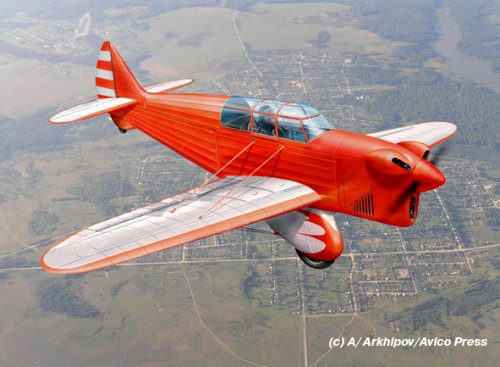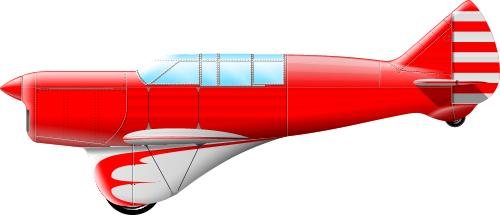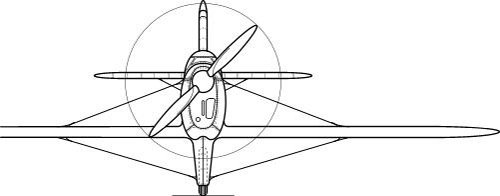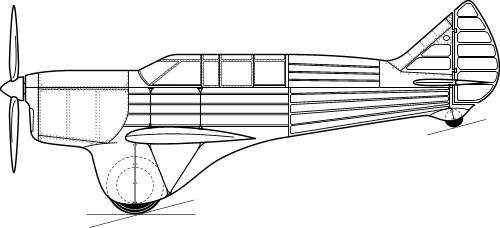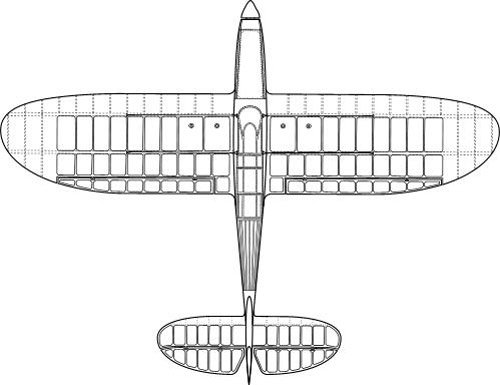You are using an out of date browser. It may not display this or other websites correctly.
You should upgrade or use an alternative browser.
You should upgrade or use an alternative browser.
Yakovlev AIR "Proyekt N°2"
- Thread starter ucon
- Start date
- Joined
- 25 June 2009
- Messages
- 13,941
- Reaction score
- 3,566
ucon said:AIR project from year 1933
Other pictures of this design, only described as "Proyekt N°2", can be found at http://www.spaceavia.ru/
I must say I'd love to learn more on this superb project! Please note the different engine cowling and air intakes.
Attachments
- Joined
- 6 September 2006
- Messages
- 4,453
- Reaction score
- 7,972
There is mention of this project in the book 'OKB Yakovlev' by Yefim Gordal et al but with no further information other than a breif description and no drawing.
At least you work has given us that. I assume the engine is an MV-6.
At least you work has given us that. I assume the engine is an MV-6.
Vahe Demirjian
I really should change my personal text
- Joined
- 28 February 2013
- Messages
- 815
- Reaction score
- 551
Specifications for Yakovlev AIR No. 2:There is mention of this project in the book 'OKB Yakovlev' by Yefim Gordal et al but with no further information other than a breif description and no drawing.
At least you work has given us that. I assume the engine is an MV-6.
- Length: 21 feet 8 in (6.6 meters)
- Wingspan: 36 feet 1 in (11 meters)
- Wing area: 165.35 sq feet (15.36 sq meters)
- Empty weight: 772 pounds (350 kg)
- Useful load: 529 pounds (240 kg)
- Aspect ratio: 8.1
- Powerplant: one 60 hp Walter 5-cylinder radial engine
Source:
Gordon, Yefim; Komissarov, Sergey (2013). Unflown wings: Soviet and Russian unrealized aircraft projects 1925-2010. Birmingham: Ian Allan Publishing Ltd. pp. 263-264. ISBN 978-1906537340.
- Joined
- 11 March 2012
- Messages
- 3,028
- Reaction score
- 2,767
ucon's picture looks like it is powered by an air-cooled, two or three cylinder radial engine. Either an upright V-twin or with a third cylinder hanging straight down.
OTOH Stargazer2006's drawing looks more like a conventional, air-cooled, straight, 4-cylinder, inverted, inline engine.
OTOH Stargazer2006's drawing looks more like a conventional, air-cooled, straight, 4-cylinder, inverted, inline engine.
- Joined
- 11 March 2012
- Messages
- 3,028
- Reaction score
- 2,767
A central under carriage, but no wingtip supporting wheels, so how did it take off, with one wingtip on the ground? It would only make a ground loop when applying power.
Civilian sport gliders routinely have a person steadying a wing tip until they are going fast enough to use ailerons for roll control. Since this Russian race plane is purely intended for racing or record-setting it is okay to depend upon extra ground crew.
FXXII
I really should change my personal text
- Joined
- 3 September 2018
- Messages
- 51
- Reaction score
- 23
OK. On the other hand gliders and motor gliders will be able to use ailerons at very low speed, i.e. some 10 km/hr, the running speed of a tip handler. I hate to think what would happen with a racer, which it apparantly is, on a runway with a spinning 60 hp propeller if the tip handler makes a mistake. Also, it would probably need more than 10 km/hr for the ailerons to be effective in view of the relatively short wingspan.
Similar threads
-
-
-
-
-
Yakovlev Yak-7R 1942 project (2xramjets, 1x rocket engine)
- Started by AF
- Replies: 6

